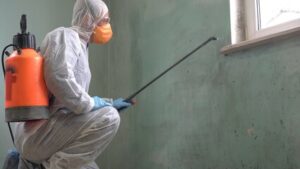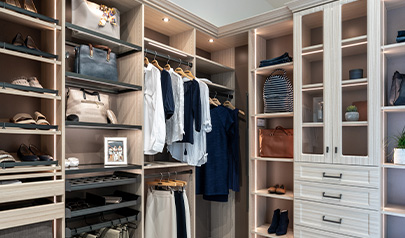Gutter cleaning is an essential home maintenance task. It ensures that rainwater is funneled away from the home, preventing water damage and minimizing basement flooding.

Gutter cleaning involves a number of steps including debris removal, flushing, and inspection. Pros use the right tools and equipment, like ladders, industrial-strength vacuums, trowels, and garden hoses, to achieve high quality results. Visit Website to learn more.
Gutter cleaning removes leaves, twigs, dirt, and other debris that accumulates in gutter systems. This debris can clog gutters, creating overflow and pooling water that can damage the roof and exterior of your house. Gutter clogs also increase the likelihood of water seepage through your home’s walls and foundation, which can be costly to repair.
Debris buildup can also cause other problems for your home and yard, ranging from landscaping damage to accelerated erosion of fascia boards and eaves. Keeping up with regular gutter cleaning will help prevent these problems and keep your gutters functioning properly.
Over time, dust and other fine sediment can collect in your gutters, especially if you live in an area with high humidity. These fine particles are practically invisible, but they can still put a strain on your gutter system and clog them. This accumulating silt can also create leaks that may lead to expensive repairs and even structural damage.
Another common problem associated with gutter neglect is the growth of plants and weeds. These pests often find shelter in clogged gutters and can cause damage to the roof, landscape, siding, and foundation of your house. Regular gutter cleaning will eliminate the organic trash that these pests love to use as breeding and nesting grounds.
During a gutter cleaning, it’s important to use a ladder that is stable and safe to climb, as well as wearing proper safety gear. It’s also important to use a garden hose with a spray nozzle to flush the gutter and clear out any remaining clogs. Be sure to use a higher pressure setting and to stay away from power lines.
In addition to removing accumulated debris from the gutter, you should also take this opportunity to inspect your gutters for any signs of rust or other damage that requires attention. A professional gutter cleaner can help you identify and address any issues, ensuring your gutters are in good condition season after season. A routine gutter cleaning schedule will help protect your home and landscape investment.
Water Damage
Clogged gutters that overflow can lead to a variety of water damage issues. As the water scours against your house’s exterior walls, it can soak into basements and foundations and soften soil, which can cause cracks and eventually structural failure. Over time, the water can also eat away at roof shingles and attic insulation.
The best way to detect gutter problems is to perform visual inspections on a regular basis. If you spot sagging or leaning, these are signs that your gutters are full of debris and can’t properly channel water away from your home.
Gutters that are clogged or overflowing can also encourage the growth of mold and mildew. These fungi thrive in moist environments, which is why it’s important to maintain a free-flowing gutter system that directs rainwater away from your home.
Gutter cleaning includes removing leaves, twigs, dirt and other debris that can clog your gutters and prevent proper drainage. It may include a gutter flush and inspection, as well. The latter involves looking for rust or other damage to your gutters and downspouts. A professional service may also use telescopic gutter clearing tools to ensure that all dirt and debris is fully removed from the gutters.
Gutters are an essential part of your home’s drainage system, directing rainwater away from your home’s walls and foundation. It’s important to clean your gutters on a regular basis to keep them in good condition and avoid costly water damage and pest infestations. If you need help maintaining your gutters, look for a professional that has positive reviews and experience serving clients in your area. A trusted team like Busy Bee can handle all of your gutter maintenance needs, keeping your home safe and beautiful while saving you time and money in the long run.
Pest Infestation
Clogged gutters provide pests with the perfect environment to breed and thrive. The rotting leaves and debris in your gutters offer rodents food, shelter, and a nest building site. The stagnant water provides mosquitoes with an ideal breeding ground, which can then spread to other parts of your yard and house.
Gutter cleaning keeps these pests away by removing their food source, shelter, and nesting sites. This helps to keep them from entering your home and causing further damage. Gutter cleaning also helps to prevent invasive species from gaining a foothold in your garden and landscaping, as well as the surrounding ecosystem.
When you neglect your gutters, it can lead to an infestation of ants, wasps, squirrels, and other small animals. They love the cool, damp environments created by clogged gutters and use twigs and other debris to build their nests. The clogged gutters can then become a pathway for them to access your roof and enter your house. In addition, the rodents and birds that are attracted to clogged gutters can cause extensive damage to your property, ranging from gnawed structures to destroyed plants.
The best way to protect your home from pests is to clean your gutters regularly. This is especially important during the fall and spring, when they are most likely to become clogged. If you’re comfortable using a ladder and working with tools, then this is a task that can be done by yourself. Otherwise, it’s best to hire a professional to do the work for you.
Gutters are a vital component of your home, so it’s essential to keep them in good condition at all times. A simple DIY maintenance routine can help to reduce the need for gutter repair and protect your home from severe pest infestations. Regular gutter cleaning should be part of every homeowner’s schedule.
Landscaping Damage
A neglected gutter system can contribute to serious landscape and garden damage. When water spills over gutters, it can wash away topsoil and seeds that would otherwise nourish flowers and plants. Over time, this can weaken or destroy vegetation and lead to soil erosion around the house foundation. In addition, puddles and soggy lawns can become unsightly and make outdoor spaces unusable. Gutter cleaning helps to prevent this type of landscape and gardening damage by ensuring that rainwater is properly directed away from the home.
Gutters that are clogged can also cause problems for your home’s roof and siding. Rainwater that isn’t effectively redirected can cause leaks and staining on the home’s roof, while splashing or overflowing water can discolor and erode the siding of the house. Regular gutter cleaning will help to keep your home looking its best and protect the investment you’ve made in its landscaping and curb appeal.
Another concern with clogged gutters is that they can create the perfect environment for mildew and mold to thrive in. These fungi love damp environments and can quickly overtake the inside of your home. If they are not removed, they can cause a variety of health problems for household members and even devalue your property. Gutter cleaning ensures that rainwater is properly directed away from your home, eliminating the conditions that are ideal for mold and mildew to grow.
If your gutters are filled with debris and you are not keeping them clean, it’s likely that you’re also neglecting other maintenance tasks on your property. This can include roof inspections and maintenance, as well as driveway, sidewalk, and patio repair. If you’re planning on selling your property in the future, it’s important to keep up with these maintenance tasks to preserve the condition of your property and its value. Potential buyers will see a well-maintained property as an indication that you cared for your home, boosting its value. Gutter cleaning is an easy way to help maintain your property’s value and appearance. It’s also a lot less expensive than the costly repairs that can result from neglecting gutters.


